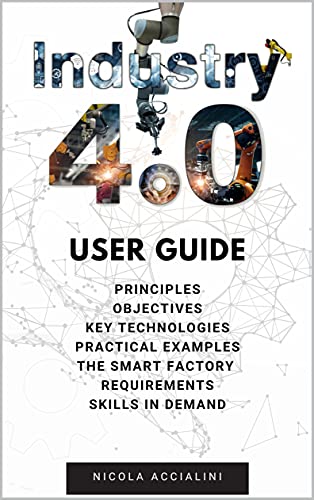
English | 2021 | ISBN: B09542FXPK | 235 pages | pdf, epub, azw3 | 7.22 MB
The concept of Industry 4.0 appeared for the first time in an article published in November 2011 by the German government that resulted from an initiative regarding a high-tech strategy for 2020. Since then, several cutting-edge technologies evolved at a very fast pace and they are promising to play a crucial role in the development of smart factories. What are the reasons that are pushing us towards a 4th industrial revolution? What are the key technologies? How industrial countries are facing it? What are the main challenges? This book is designed to provide managers, engineers and students with the full picture of the 4th Industrial Revolution, its implications to organisations, its technologies and their applications. This book is divided into 4 main parts:PART 1: OVERVIEW. This section provides a general overview of the 4th industrial revolution. Do we really need a step change? What are the key technologies and the main implications on our way of producing goods? How are industrial countries facing this trend?PART 2: THE KEY TECHNOLOGIES. In this section, we will go through a set of technologies which will be the bricks to build digital factories, the final goal of Industry 4.0. For each technology, we will provide a brief historical overview, we will explain how the technology works and what solutions are currently available on the market. Finally, we will present some concrete ideas for the implementation of pilot projects in an existing facility.PART 3: THE SMART FACTORY. In this section, we will provide a proper definition of what a Smart Factory is. Indeed, designing a Smart Factory is much more than putting some digital technologies together, just like learning a new language is much more than putting some new words together. A Smart Factory combines smart solutions to create a virtuous environment in which workers may take advantage of their cognitive skills instead of doing repetitive tasks. A step-by-step approach for the implementation of a Smart Factory will be provided, and some practical examples of existing factories will be described.PART 4: REQUIREMENTS AND SKILLS IN DEMAND. The last part of the book describes the requirements that companies must take into account if they are willing to develop new smart solutions inside their production facilities. A set of soft and hard skills will be required as well: soft skills include risk management, change management, creativity, flexibility, whereas hard skills include subjects like mechatronics, material engineering, computer technology and much more.
download скачать
https://nitroflare.com/view/0D16321E6A35B34/gx8qs.Industry.4.0.User.Guide.zip
https://rapidgator.net/file/e54fbd17b0ec5ec887a2ffe9370b973b/gx8qs.Industry.4.0.User.Guide.zip
https://ddownload.com/3epvo749bzzp/gx8qs.Industry.4.0.User.Guide.zip

